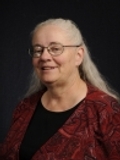|
|
|
<<< Previous speaker
|
next speaker >>>
|
Mary Poppendieck, Thought leader in the software industry

Mary Poppendieck started her career as a process control programmer, moved on to manage the IT department of a manufacturing plant, and then ended up in product development, where she was both a product champion and department manager.
Mary considered retirement 1998, but instead found herself managing a government software project where she first encountered the word “waterfall.” When Mary compared her experience in successful software and product development to the prevailing opinions about how to manage software projects, she decided the time had come for a new paradigm. She wrote the award-winning book Lean Software Development: An Agile Toolkit in 2003 to explain how the lean principles from manufacturing offer a better approach to software development.
Over the past six years, Mary has found retirement elusive as she lectures and teaches classes with her husband Tom. Based on their on-going learning, they wrote a second book, Implementing Lean Software Development: From Concept to Cash in 2006. A popular writer and speaker, Mary continues to bring fresh perspectives to the world of software development.
|
Presentation: "Deliberate Practice in Software Development"
Time:
Wednesday 13:30 - 14:30
Location:
Rytmisk Sal
Abstract: In the nature vs. nurture debate, researchers have declared nurture the winner. People who excel are the ones who work the hardest; it takes ten+ years of deliberate practice to become an expert. Deliberate practice is not about putting in hours, it’s about working to improve performance. It does not mean doing what you are good at; it means challenging yourself under the guidance of a teacher.
Unfortunately, our organizations are not set up to develop experts, nor do agile practices encourage them. So how will we develop the experts we need to improve?
Workshop: "Lean in a Nutshell"
Time:
Thursday 09:00 - 12:00
Location:
Trifork
Abstract:
It’s hard to imagine how the Empire State Building - all 85 stories plus a dirigible mooring dock - could be built in a year. In the spring of 1930, there was nothing but a hole in the ground, and by fall, the building looked pretty much the way it looks today. How did they do it?
Fundamentally, they framed the problem differently than we do today. Their mental model - which dictated what was important and what was not – would not be recognized in today's commercial world, except perhaps by those who understand lean thinking. The Empire State Building was not framed by cost, scheduled, and scope. It was constrained by two acres of land, New York City's zoning ordinances, $35,000,000 of capital, the laws of physics, and an absolute deadline. It was constructed by deeply experienced leaders who framed the issues they faced in terms of flow - the flow of materials, the flow of people, and the flow of cash.
Join Mary and Tom Poppendieck for a Lean in a Nutshell - a fast-paced tutorial aimed at senior developers and team leads. The lecture and discussion will focus on framing the software development process; it will cover four key frames that really make a difference when you are developing software: (1) A systems view, (2) Essential technical capability, (3) What it takes to deliver reliably, and (4) How to improve.
Here is the table of contents in a nutshell:
- Failure Demand – what it is, what causes it, and why you have to get rid of it
- Technical Excellence – what it means, where it comes from, and why it’s not optional
- Workflow – how it’s different than scheduling and why it’s more important than deadlines
- Customer Outcomes – just how concerned should the development team be?
- Relentless Improvement – taking retrospectives to the next level
|
 |
| |
 Mary Poppendieck started her career as a process control programmer, moved on to manage the IT department of a manufacturing plant, and then ended up in product development, where she was both a product champion and department manager.
Mary Poppendieck started her career as a process control programmer, moved on to manage the IT department of a manufacturing plant, and then ended up in product development, where she was both a product champion and department manager.


